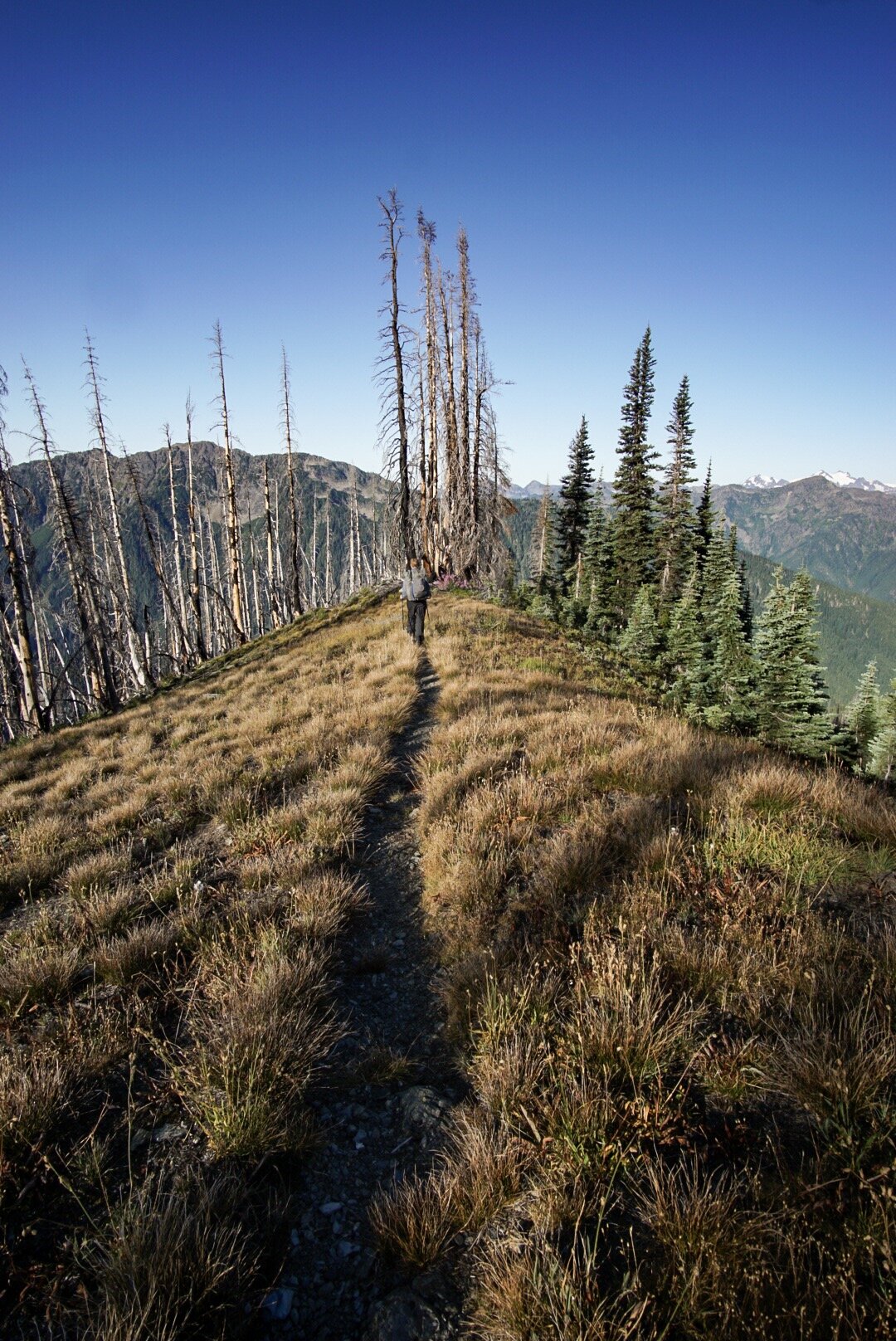A version of this post appears on The Trek, which you can read here
The coastal section through the Olympic National Park starts, as many PNT sections do, with a 22-mile walk through forest roads. We walk it as fast as possible, knowing it’ll be our last day of roadwalking. Whoo hoo! Near the end of the day the road joins the Ho River. After a little while we hear a faint crashing noise. Waves from the ocean? A mile or so later we pop out from the forest and get our first wide view of the Pacific Ocean. We made it!
After 70 days walking up and down mountains the coast section feels like a totally different trip. The expansive ocean stays to our left, tide pools and beach line the path forward. Our hiking is dictated by the pull of the tides. We also are tapering our mileage, taking four days to walk the last 38 miles.
Another difference: a group of seven thru-hikers all started out of Forks on the same day with the same idea. We end up meeting most days to wait out the midday high tide and camp around a beach bonfire at night. Since Glacier National Park we’ve only camped with other thru-hikers a handful of times. For the most part I’ve enjoyed the solitude but having other hikers around at the end is exciting and makes us realize how epic of a journey this has been. It’s hard to know for sure but likely 50 people or less will complete the PNT this season. It’s a rare treat to share our experiences with other PNT class of 2019ers.
The first two days end up being gorgeous weather, warm with clear skies and calm seas. There are fun (and slightly sketchy) overland ropes to pull ourselves up and over rocky headlands. We even found whale bones!
On the third day we wake to an overcast brooding sky. Rain is definitely on the way. We manage to make it over slippery rocks and across a large section of beach by 10 a.m., just before the rain starts. We set up our tent and build a fire to stay dry as the rain keeps coming. And coming. The other PNTers also stop to wait out the rain. It ends up raining straight from 10:30 a.m. to 7 p.m., and everyone decides to camp. We’re less than ten miles to the end and have had our shortest day of hiking! It’s hard not to go stir crazy in the tent.
The next day, our last day, we wake up early. The rain is holding off so we move out of camp ASAP. An hour later we see other hikers coming up behind us. It’s a group of five other thru-hikers who have caught up to us! There will be 12 of us finishing today; it’s possible that’s a PNT record.
The gray skies remain but the rain holds off until just as we are finishing at Cape Alava, the western-most point of the Lower 48. We did it! We are exhausted! We are excited! We are thru-hikers! The end of the trail is fitting for the PNT. No sign, no blaze. The beach continues northward. Day hikers and backpackers gives us quizzed, confused looks as we celebrate the end of a 1,200-mile, 74-day journey.























